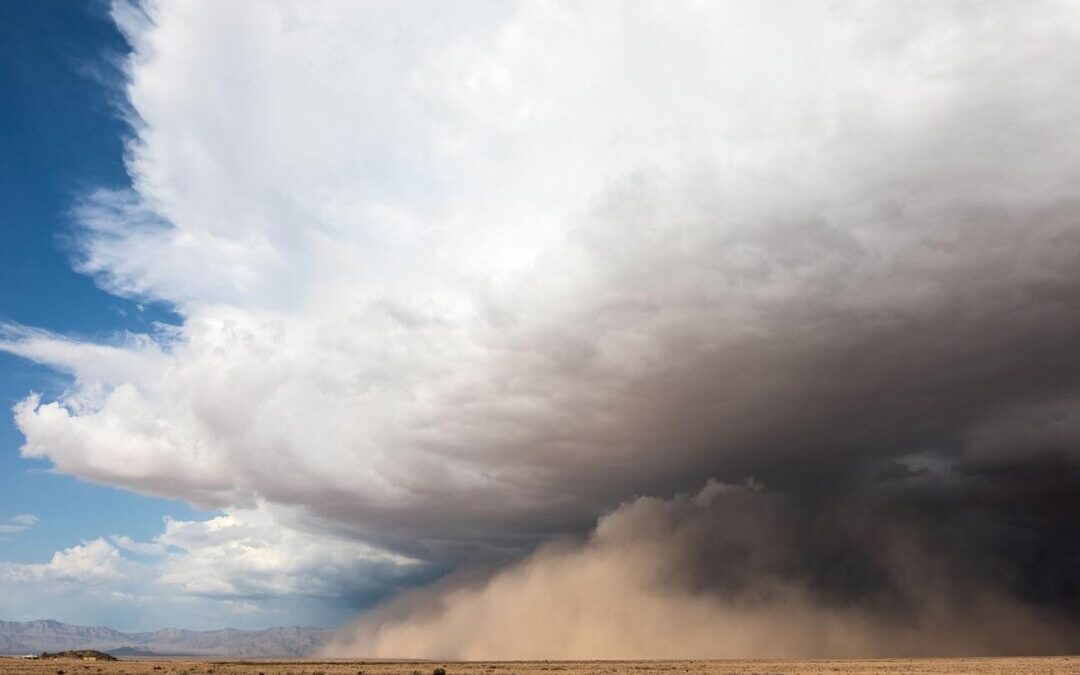WMO Warns of Rising Health and Economic Toll from Sand and Dust Storms
UN specialized agency report links dust storms to rising health risks and economic losses, urging global action and early warnings.
Sand and dust storms are posing mounting threats to human health, economies and ecosystems, the World Meteorological Organization warned on Wednesday, citing new data showing escalating impacts and calling for strengthened global monitoring and early-warning systems.
The WMO’s annual Airborne Dust Bulletin estimates that around 330 million people in more than 150 countries are affected by sand and dust storms each year. The findings were released ahead of the International Day of Combating Sand and Dust Storms on July 12.
“Sand and dust storms do not just mean dirty windows and hazy skies,” said WMO Secretary-General Celeste Saulo. “They harm the health and quality of life of millions and cost many millions of dollars.”
Health Risks Rising Sharply
A joint indicator by WMO and the World Health Organization found that nearly half of the world’s population — 3.8 billion people — were exposed to unsafe dust levels from 2018 to 2022, a 31 percent rise from the 2003–2007 period.
Exposure was particularly acute in dust-prone areas, where levels exceeded safety thresholds on more than 87 percent of days during the five-year period, according to data published in the Lancet Countdown on Health and Climate Change: 2024 Global Report.
Costs Run into Billions
Economic losses linked to dust and wind erosion are widely underestimated, the report said. A case study from the United States put the cost at $154 billion in 2017 — more than four times the 1995 estimate. This included losses in agriculture, energy production, transportation, and health impacts such as Valley fever.
Globally, over 2 billion tons of sand and dust enter the atmosphere annually — equivalent to more than 300 Great Pyramids of Giza — with more than 80 percent originating from North African and Middle Eastern deserts.
Regional Hotspots and 2024 Events
Chad’s Bodélé Depression remains one of the world’s most active dust sources, with peak annual surface dust concentrations ranging from 800 to 1,100 micrograms per cubic meter in 2024.
In the southern hemisphere, hotspots were observed in central Australia and coastal South Africa.
Major storm events last year included:
- Canary Islands: In December, strong Harmattan winds carried Saharan dust across northwest Africa to Spain’s Canary Islands, severely impacting populated areas.
- East Asia: Northern China experienced 14 dust storms in 2024, including an intense summer event linked to drought and extreme heat in Mongolia.
- West Asia: Iraq, Kuwait, and Qatar were hit by a rare winter storm that disrupted flights, closed schools, and halted public events.
Forecasting and Global Action
The WMO’s Sand and Dust Storm Warning Advisory and Assessment System, launched in 2007, now includes four regional centers in Saudi Arabia, Spain, China, and Barbados. These centers provide real-time forecasting, early warnings, and regional coordination to mitigate storm impacts.
The United Nations has declared 2025–2034 the Decade on Combating Sand and Dust Storms. A high-level meeting hosted by the UN General Assembly President in New York on July 12 will mark the occasion.
Saulo emphasized the need for greater investment in early-warning systems: “This bulletin shows how health risks and economic costs are rising—and how investments in mitigation would reap large returns.”
Nirmal Menon
Related posts
Subscribe
Error: Contact form not found.


